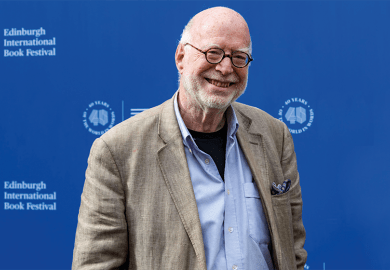I have a confession. You know those people on footpaths who randomly slow down, stop, veer from side to side and shout into their hand for no particular reason? No, not the Friday-night revellers who have ingested three litres of Grey Goose vodka and lose their motor skills. I refer to the people who read and compose text messages while walking. I do not titter or sigh as I pass them. Instead, I slow down and mimic their John Cleese-inspired silly walk. In reaction, most swing around and shriek “wotthehellyudoin?” I merely reply, “Following your lead. I thought you were starting a trend. No one would look that silly unless it was fashionable.”
Malcolm McCullough takes a less adversarial approach. A scholar of architecture, he writes books and articles that offer gentle reflections on the startling collisions between analogue and digital places, structures and agendas. Ambient Commons: Attention in the Age of Embodied Information, is quiet, patient and profound; through 12 pithy chapters, it asks us to ponder information contexts.
The proliferation of platforms, formats and screens means that we now manage an array of augmentations in our lives. McCullough develops a concept to explore these alignments between technology and context, concentration and distraction, information and overload, absence and abundance. He calls it “ambient commons”, a way to align “the quickly rising flood of data” and “attention to surroundings”.
Part one of the book moves from ideas of the ambient, through to information, attention, embodiment and fixity. McCullough asks us to recognise moments when “information superabundance” becomes embodied, when information does not distract but creates an intense connectivity to the environment. In the second part, he reveals his expertise in architecture. He pays attention to frames and facades, megacities and environmental history. For scholars interested in city imaging and urban planning, this section offers a fresh dialogue between spaces, places and digitisation.
This book’s great strength is its focus on attention. McCullough values and validates the importance of managing data glut and platform proliferation, arguing that “attention has become something to guard and to manage”. He recognises that when information is overwhelming, we return to the easy, personal and simple. Instead of reading Louis Althusser, it is easier to return to a friend’s Facebook feed. Instead of thinking about the applications of Stanley Aronowitz’s The Knowledge Factory in the contemporary university, it is more pleasant to watch another YouTube video of a cat flushing a toilet.
In essence, McCullough offers a philosophy of information systems. He asks how, as technologies undergird our daily lives, we can cope with the dread of FOMO - the Fear of Missing Out? The old joke would have it that anyone who remembers the 1960s wasn’t there. But with no “here” or “there” in a de-territorialised, post-Google age, the joys and excitements of life are mediated through mobile phone footage. Even when we are “there” for one of life’s great moments, it is punctuated by Foursquare check-ins, Facebook comments and a tweet. We are so busy sharing our experience that we do not experience the energised moment in the first place. McCullough asks us to become “stewards” of information. By embedding data with care and generating structures for participation, overload and distraction can be replaced with concentration and embodiment.
Certain books require careful note-taking while seated in a rigid chair, under a harsh light. Concentration is necessary. Others are more expansive, abstract, stretchy and groovy, encouraging readers to dress in tracksuits, grab a cold glass of Chardonnay and repair to a comfortable leather sofa.
These rare and evocative books activate a sensory experience. Beyond ideas. Beyond notes. Beyond information. Beyond interpretation. They encourage feeling, a memory of where we were as innovative ideas hooked into our intellectual architecture. Roland Barthes’ Camera Lucida is one example, Greil Marcus’ Lipstick Traces another. To this list can be added Ambient Commons. This is a book to feel with, reflect on, and use to develop new modes and models of thinking and learning. It may just change the scholarly world, through silence, reflection and respectful attention to contextualised information.
Ambient Commons: Attention in the Age of Embodied Information
By Malcolm McCullough
MIT Press, 320pp, £19.95
ISBN 9780262018807
Published 3 May 2013
Register to continue
Why register?
- Registration is free and only takes a moment
- Once registered, you can read 3 articles a month
- Sign up for our newsletter
Subscribe
Or subscribe for unlimited access to:
- Unlimited access to news, views, insights & reviews
- Digital editions
- Digital access to THE’s university and college rankings analysis
Already registered or a current subscriber? Login




